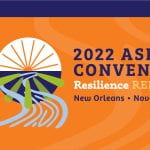 Mandak, K., Light, J., McNaughton, D. (2017, November). Visual scene displays with dynamic text: Effects on word reading for preschoolers with ASD. Presentation at the Annual Conference of the American Speech-Language Hearing Association (ASHA), Los Angeles, CA.
Mandak, K., Light, J., McNaughton, D. (2017, November). Visual scene displays with dynamic text: Effects on word reading for preschoolers with ASD. Presentation at the Annual Conference of the American Speech-Language Hearing Association (ASHA), Los Angeles, CA.
Mandak et al (2017) Handout (pdf)
Abstract: While young communicators with ASD typically use graphic symbols to communicate, there are currently no evidence-based AAC apps that support the transition from symbols to text. This study investigated the effects of dynamically displaying text within a visual scene display (VSD) app to support this transition. Three preschoolers with ASD were exposed to the app during a storybook reading interaction. Findings revealed the children’s acquisition of targeted sight words following exposure to the app.
More than 90% of individuals with CCN enter adulthood without functional literacy skills (Foley & Wolter, 2010). This results in serious restrictions with regards to participation in education, employment, healthcare, and society. To help these individuals who use AAC systems/apps transition from graphic symbols to orthographic text, Light, McNaughton, Jakob, and Hershberger (2014) proposed the addition of the Transition to Literacy (T2L) software feature. This feature provides dynamic presentation of text with speech output when a picture symbol is selected. T2L apps are intended to complement literacy instruction for individuals with CCN, further research and developments are required to support full transition to literacy.
Light, J., McNaughton, D., Jakobs, T., & Hershberger, D. (2014). Investigating AAC technologies to support the transition from graphic symbols to literacy. RERC on AAC: Rehabilitation Engineering Research Center on Augmentative and Alternative Communication. Retrieved from https://rerc-aac.psu.edu/research/r2-investigating-aac-technologies-to-support-the-transition-from-graphic-symbols-to-literacy/

